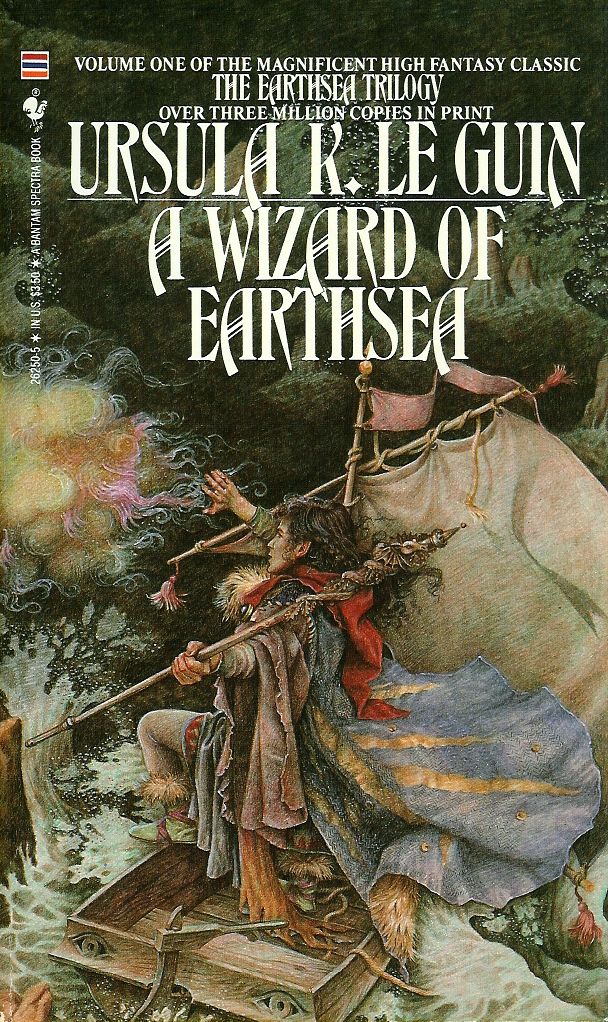 A Wizard of Earthsea
A Wizard of Earthseaby Ursula K. LeGuin
reviewed by Hailey Ramos
A Wizard of Earthsea, a bildungsroman by author Ursula K. LeGuin, tells the tale of the coming-of-age of a young wizard called Ged. As a child, Ged learns the art of wizardry from his aunt and uses his skills to defend the small town he lives in from warlike savages who inhabit a nearby island. Proving himself and his magic useful against the invaders, a wise old wizard named Ogion takes Ged in as his apprentice. Ogion teaches Ged magic through studying and spending time in silence, but Ged decides “he hungered to learn, to gain power” (23). Ged, sent to wizarding school on the island of Roke, meets Vetch and Jasper. Jasper becomes Ged’s rival, and trying to prove himself better than Jasper, Ged decides to summon a spirit of the dead. He accidentally unleashes a shadow demon upon himself, and when the Archmage of Roke assists him in banishing the shadow, the Archmage dies trying to protect Ged and the island. Feeling responsible and guilty for the Archmage’s death due to his own pride, Ged decides to finish his education on Roke and becomes a sort of sentry on a nearby island, protecting it from dragons. Ged becomes humbled and less “loud and proud and full of temper” (2) after his encounter with the shadow and taking responsibility for protecting the citizens of the island. Ged then realizes he puts all of the citizens in danger when he fails at saving a friend’s dying son and encountering the shadow while doing so. He decides to leave the island in fear of jeopardizing the citizens’ safety and lives a nomadic life in fear of the shadow, traveling from island to island. Eventually returning to Ogion, the wise wizard tells Ged that he must confront the shadow instead of running from it. During his entire journey, Ged learns from and fixes his wrongs, and learns about himself while doing so.
Ursula K. LeGuin, author of this novel, decides to use direct characterization of her characters. For example, LeGuin describes Ged’s friend Vetch, telling readers that “he was plain, and his manners were not polished” (52). LeGuin decides to tell readers how her characters act rather than show their personalities through their acts to convey a folktale- or fairytale-like style in her writing. LeGuin also uses spectacular similes to communicate the feelings of her characters. She describes Ged speaking one of the dragon’s names as “if he held the huge being on a fine, thin leash, tightening it on his throat” (127). The novel itself is an obvious fantasy novel, set in quite natural surroundings and following a hero’s quest.
No comments:
Post a Comment